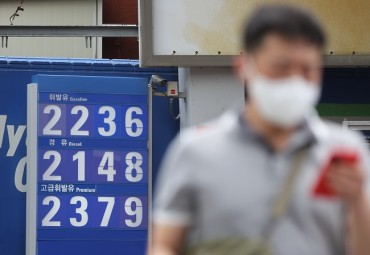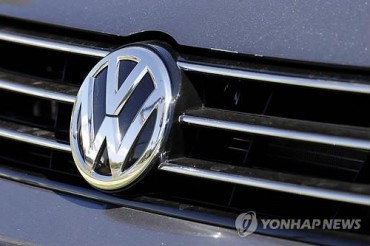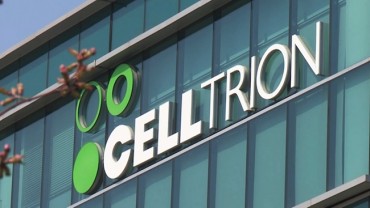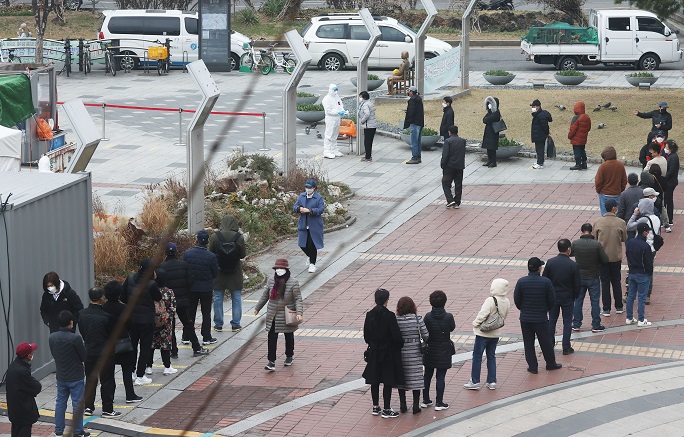
This photo taken on March 21, 2021, shows people lined up to undergo coronavirus tests at a makeshift COVID-19 testing center in Guro, Seoul. (Yonhap)
SEOUL, March 21 (Korea Bizwire) — South Korea’s daily new coronavirus cases stayed in the 400s for a fifth day on Sunday, raising concerns that continued sporadic cluster infections might lead to a resurgence in the pandemic.
Cases tied to saunas, sports facilities and church gatherings continued to take place, and more infections are likely in the coming weeks from spring outings.
The country reported 456 more COVID-19 cases, including 437 local infections, raising the total caseload to 98,665, the Korea Disease Control and Prevention Agency (KDCA) said in a statement.
The daily tally was slightly up from 452 on Saturday. The increase was unexpected as fewer people are tested on weekends, resulting in fewer cases.
The country added three more deaths from COVID-19, raising the total to 1,696. The fatality rate was 1.72 percent, the health agency said.
As of 9 p.m., the country reported 381 more virus cases, down 11 from the same time on Saturday, according to central and provincial authorities.
Of the total, 256 cases, or 67.2 percent, were reported from the greater Seoul area, including 143 in Gyeonggi Province and 106 in the capital.
The virus reproduction rate slightly declined to 1.04 last week, compared with 1.07 recorded a week earlier, Son Young-rae, the spokesman for the health ministry, said, noting the need for the country to stay vigilant.
“The third virus wave still continues, and the risks of infection remain high,” Son told a press briefing. “To ensure that the infections will slow rather than further spreading in this precarious situation, we urge citizens to abide by anti-virus rules.”
Cluster infections have shown no signs of letting up in the densely populated greater Seoul area. This led the government to extend virus curb measures that were set to expire on March 14 for another two weeks until March 28.
To curb infections at saunas, the authorities decided to start conducting COVID-19 tests on all workers at saunas across the country on Monday, including barbers, skin care staff and cafeteria operators.
The authorities will make it mandatory for all saunas to conduct temperature checks on their customers, have the customers’ QR codes scanned, bar them from talking to one another and recommend they stay in saunas for no more than one hour.
The greater Seoul area has been under the current Level 2 social distancing measures, the third highest in the five-tier curbs, since February. The measures include attendance caps at schools, religious activities and sports events.
On top of the preventive measures, health authorities plan to step up the AstraZeneca COVID-19 vaccine rollout following the European Medicine Agency’s (EMA) announcement that there is no evidence suggesting a correlation between the vaccines and blood clots found in some recipients.
On Sunday, Prime Minister Chung Sye-kyun reiterated that the AstraZeneca vaccine generates no safety concerns in terms of blood clots.
Given recommendations for the AstraZeneca shots by EMA and the World Health Organization, Chung said the government reached the conclusion based on the analyses by the two global agencies and a thorough study of several domestic cases of extraordinary reactions to the shots.
The use of the vaccine has been suspended in more than a dozen European countries, including Germany, France and Italy, after reports of blood clots in people who received AstraZeneca products.
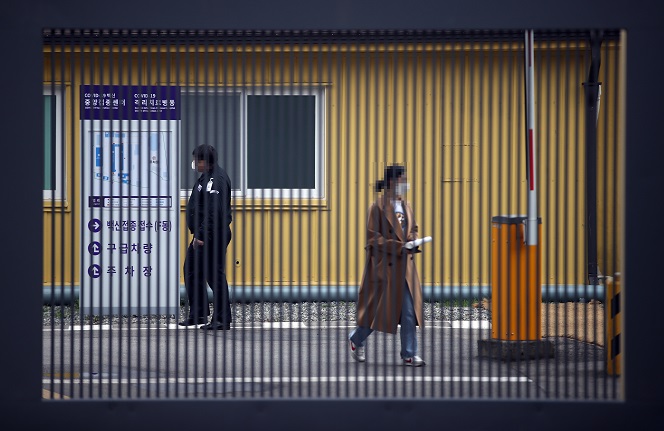
This photo taken on March 21, 2021, shows a woman walking into a coronavirus vaccination center at the National Medical Center to receive a Pfizer vaccine shot. (Yonhap)
South Korea is set to begin administering the AstraZeneca vaccine to inpatients of nursing homes and long-term care hospitals who are aged 65 or older from Tuesday as new overseas studies showed the effectiveness of the vaccine for the age group.
More than 370,000 health workers and patients aged 65 and older at sanatoriums, nursing facilities and rehabilitation facilities will receive their first shots of AstraZeneca’s COVID-19 vaccine in steps, according to the KDCA.
Under the country’s vaccination program that started on Feb. 26, a total of 12 million people will be vaccinated by the end of June. Foreigners also will be inoculated under the program.
The country aims to achieve herd immunity by November.
A total of 676,587 people, including 939 the previous day, have been given COVID-19 vaccine shots. This accounts for around 1.3 percent of the country’s population and 84.6 percent of those who are advised to be vaccinated by the end of March.
AstraZeneca’s vaccine accounted for 619,100, while Pfizer’s took up 57,487. On Saturday, the government began a second round of shots for those who have been inoculated with Pfizer’s vaccine.
The second round of shots for AstraZeneca’s vaccine is expected to begin in late April.
A total of 9,782 cases of side effects after vaccinations have been reported, but most of them have turned out to be mild symptoms such as headache, fever and nausea.
Sixteen deaths after vaccinations have been reported, with no additional deaths reported the previous day, the KDCA said.
Of the new locally transmitted cases, 124 came from Seoul and 155 were reported from Gyeonggi Province that surrounds the capital.
Incheon, just west of Seoul, reported 20 more cases. The three areas that make up the greater Seoul area accounted for 72 percent of all locally transmitted cases.
Cases involving a livestock product market in Anseong, just south of Seoul, increased by three to 136.
Infections related to an insurance company in Sejong Special Self-Governing City rose by five to 26, and cases tied to a sports facility in Daegu, 300 kilometers south of Seoul, grew by seven to 26.
The number of imported cases came to 19, up from 12 the previous day. Cases from Asian countries except for China stood at 11, with cases from Africa, Europe and the United States at four, three and one, respectively.
The number of seriously or critically ill COVID-19 patients was 104, down two from the previous day.
The total number of people released from quarantine after making full recoveries was 90,328, up 379 from a day earlier.
South Korea has carried out 7,332,714 COVID-19 tests, including 23,764 from the previous day.
(Yonhap)




